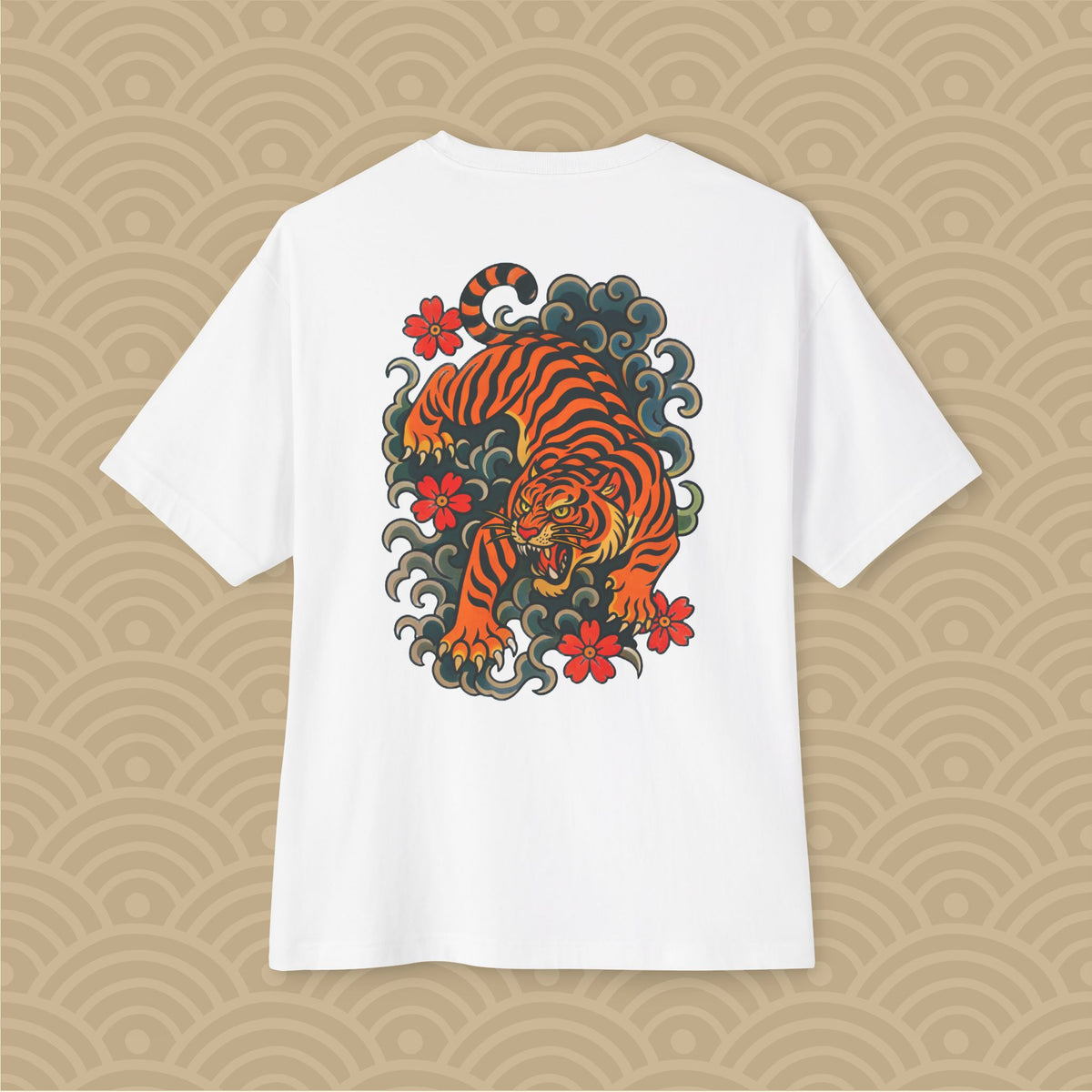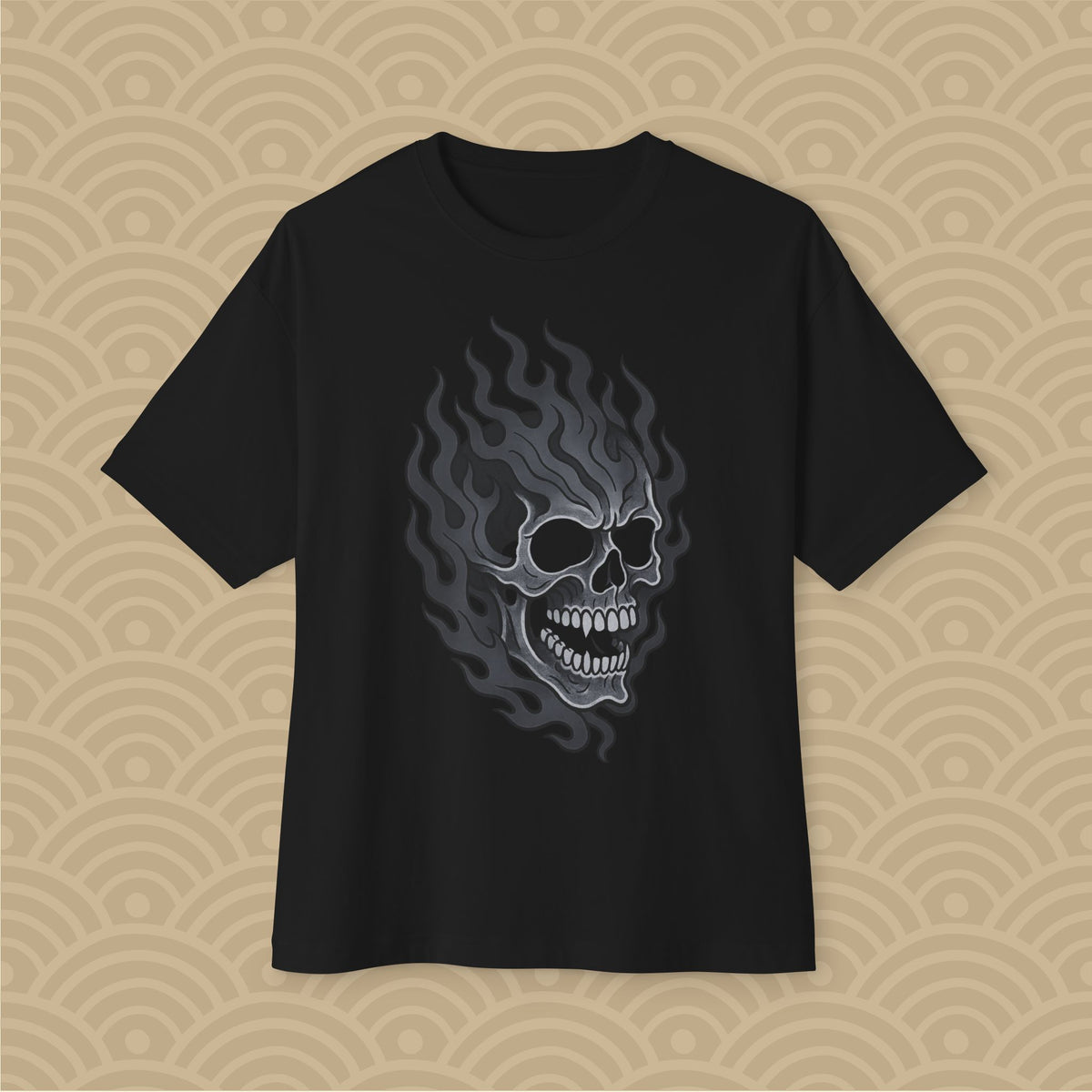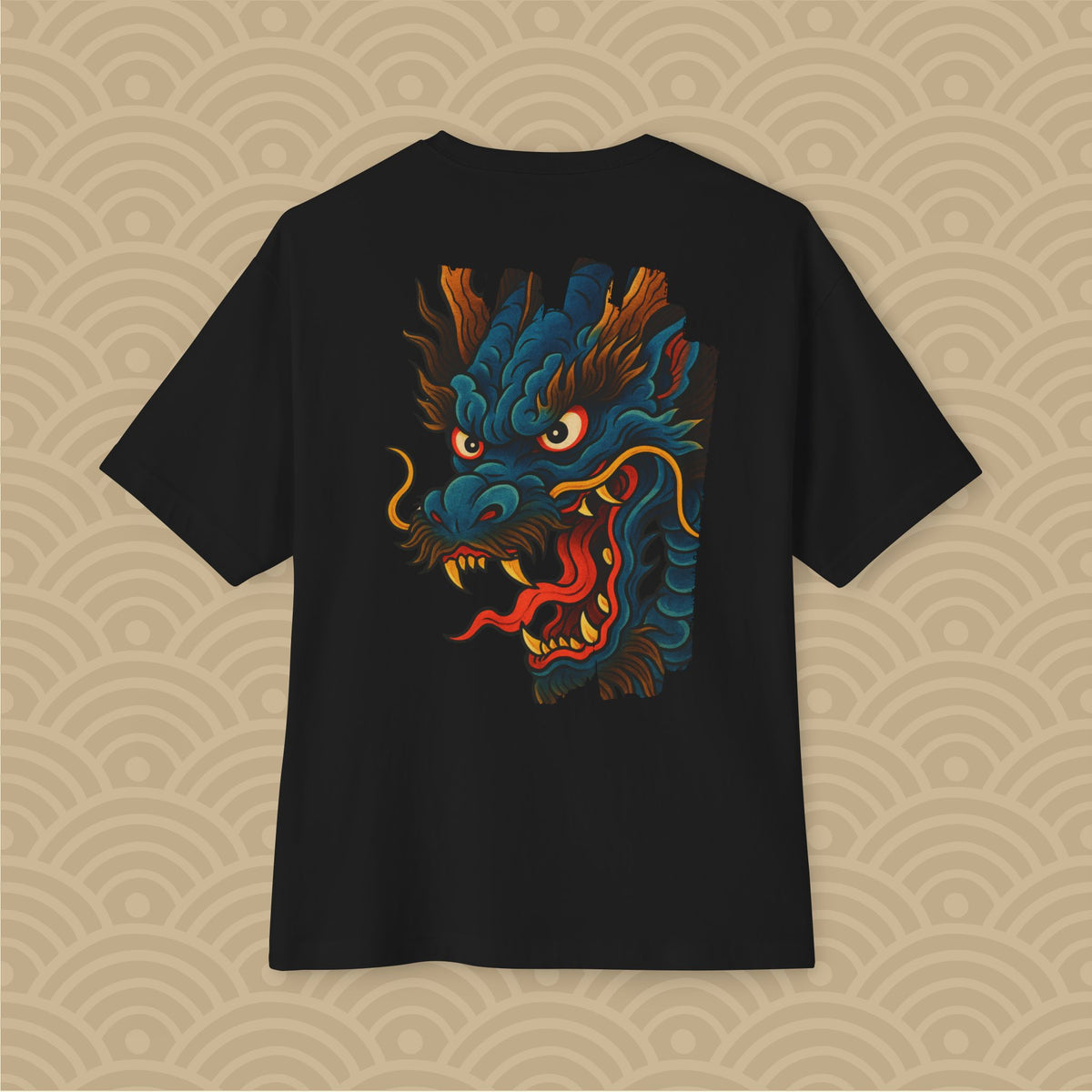In the dimly lit corners of Edo-period Japan, where smoke from grilled yakitori mixed with the sweet aroma of warm sake, a different kind of art gallery existed. The patrons rolling up their sleeves to pour drinks weren't just revealing skin—they were displaying epic tales of heroes, demons, and gods rendered in indigo ink. These weren't just tattoos; they were walking libraries of Japanese mythology, and they fundamentally shaped how ancient izakaya culture developed.
To understand the relationship between traditional Japanese tattoos (irezumi) and drinking culture, you need to understand that these weren't casual decorations. They were profound statements of identity, rebellion, and storytelling that created their own social ecosystem in Japan's traditional drinking establishments.
The Art of Flesh: Understanding Irezumi
Traditional Japanese tattooing, known as irezumi (literally "inserting ink"), reached its artistic peak during the Edo period (1603-1868). Unlike modern tattoos applied with electric machines, irezumi was created using tebori—hand-poking techniques with bamboo or metal tools that could take years to complete a full-body suit.
These weren't random designs chosen from flash sheets. Each irezumi told a complete story, often covering the entire torso, arms, and legs in an intricate narrative that flowed across the body like a living scroll. The commitment required—both in time and pain endurance—meant that getting irezumi was a profound life decision that marked someone as fundamentally different from mainstream society.
The Legends Beneath the Skin
The subjects of traditional irezumi came primarily from three sources: Chinese classical literature (particularly "Water Margin"), Japanese folklore, and Buddhist-Shinto religious imagery. Each carried deep cultural significance that would have been immediately recognizable to anyone in an Edo-period izakaya.
The Heroes of Water Margin (Suikoden)
The most popular irezumi subjects came from "Suikoden," the tale of 108 outlaw heroes who rebelled against a corrupt government. These weren't just random rebels—each had a specific story, personality, and moral code. Having Shi Jin the Nine Dragoned tattooed across your back wasn't just aesthetic; it was declaring yourself aligned with righteous rebellion against authority.
In izakaya culture, men with Suikoden tattoos were immediately understood to be kindred spirits—people who valued loyalty, honor, and resistance to oppression over social conformity. They could share drinks and stories with the unspoken understanding that they'd chosen a path outside mainstream acceptance.
Dragons, Koi, and Transformation
The dragon (ryu) was perhaps the most revered irezumi subject, representing wisdom, strength, and the power of transformation. Unlike fearsome Western dragons, Japanese dragons were benevolent beings associated with water, rainfall, and prosperity—perfect symbols for people whose livelihoods depended on rice cultivation and sake brewing.
The koi fish climbing waterfalls to become dragons represented perseverance and transformation through struggle. For working-class men gathering in izakaya after grueling labor, these images resonated deeply. Your tattoos told everyone that you understood life was about enduring hardship to achieve something greater.
Oni, Tengu, and the Spirit World
Supernatural beings like oni (demons) and tengu (bird-like creatures) were popular irezumi subjects that represented the liminal space between the human and spirit worlds. In izakaya culture, where alcohol was believed to thin the barriers between realms, these tattoos marked their bearers as people comfortable navigating the supernatural.
Having an oni tattooed on your body wasn't about worshipping demons—it was about acknowledging the dark forces in life and choosing to face them with courage rather than denial.
The Social Geography of Tattooed Drinking
By the mid-Edo period, certain izakaya became known as gathering places for the heavily tattooed. These weren't rough biker bars—they were sophisticated social spaces where artisans, firefighters, construction workers, and even low-ranking samurai could gather to appreciate each other's body art while sharing sake and stories.
The ritual of revealing tattoos in these spaces was ceremonial. Men would carefully remove their kimono to display their irezumi, not as showing off, but as sharing their personal mythology with others who could appreciate the artistry and symbolism. This created an immediate bond—you were looking at someone's deepest beliefs and values literally written on their skin.
The Firefighter Brotherhood
Edo's firefighters (hikeshi) were legendary for their elaborate irezumi and their drinking culture. Their tattoos typically featured water-related imagery—dragons controlling rain, Buddhist water deities, scenes of heroes battling flames. After risking their lives fighting fires, they would gather in specific izakaya to drink, compare tattoos, and tell stories of their exploits.
These weren't casual social gatherings—they were ritual celebrations of survival where the tattoos served as both protection (spiritual armor) and identification (tribal markers). The sake flowed freely because these men lived with constant awareness of mortality.
The Artisan Networks
Carpenters, plasterers, and other skilled craftsmen developed their own tattooed drinking culture centered around pride in their work and resistance to class restrictions. Their irezumi often featured tools of their trade integrated with mythological imagery—hammers wielded by thunder gods, measuring tools held by wise dragons.
In their izakaya gatherings, displaying these tattoos was a way of asserting that manual labor had its own nobility and artistry. The connection between the art on their skin and the craft of their hands created a powerful sense of identity that alcohol helped them celebrate and reinforce.
The Sake Connection: Liquid Courage and Liquid Art
The relationship between irezumi and sake culture went deeper than just tattooed people drinking together. The actual process of getting tattooed was often fueled by sake, both for pain management and ceremonial purposes.
Traditional tebori sessions could last for hours, with clients drinking sake to dull the pain and maintain the meditative state necessary for enduring the process. The tattoo artist (horishi) would often share drinks with the client, creating a bond between artist and canvas that lasted far beyond the completion of the work.
Many horishi operated out of or near izakaya, where they could meet potential clients and display their artistry on existing customers. The social atmosphere of sake-fueled conversation was perfect for discussing the complex symbolism and personal meaning that would go into a major irezumi project.
The Ritual of Revelation
In traditional izakaya culture, the revealing of irezumi followed specific social protocols. You didn't just strip off your shirt—there was an art to gradually displaying your tattoos that built anticipation and respect.
The process often began with subtle hints—a dragon's tail peeking from beneath a sleeve, the edge of a cherry blossom visible at the neckline. As the evening progressed and sake loosened inhibitions, more of the artwork would be revealed. The final unveiling was a moment of high ceremony, often accompanied by specific toasts acknowledging the beauty and meaning of the work.
This ritual served multiple purposes: it built social bonds through shared appreciation of art, it allowed the tattooed person to control how their story was revealed, and it created a hierarchy of intimacy—only trusted drinking companions got to see the full narrative written across someone's body.
The Stories Behind the Ink
Each traditional irezumi told a complete story, and izakaya culture became the venue for sharing these narratives. A man with Minamoto no Yorimitsu slaying the giant spider Tsuchigumo tattooed across his back wasn't just wearing decoration—he was carrying a story about courage in the face of supernatural evil that he could share with fellow drinkers.
These story-sharing sessions became a form of oral literature, with the visual prompt of the tattoo launching elaborate retellings of classical tales. The sake enhanced both the telling and the listening, creating an immersive experience where ancient legends came alive in the warm glow of lantern light.
The Tale of the Tattoo
Beyond the mythological subjects, each irezumi had its own personal story—why this particular image, why this particular artist, what it meant to the wearer. These personal narratives became as important as the classical stories depicted in the ink.
A construction worker might explain how his dragon tattoo helped him survive a building collapse. A merchant might describe how his Fudo Myo-o (Buddhist deity) tattoo protected his business from fire. These weren't superstitions—they were deeply held beliefs about the protective and transformative power of the images worn on their skin.
The Decline and Transformation
The Meiji Restoration of 1868 marked the beginning of the end for traditional irezumi culture in izakaya settings. As Japan rushed to modernize and gain acceptance from Western powers, tattoos became associated with criminality and social deviance. The government banned tattooing in 1872, driving the practice underground.
The izakaya that had once celebrated tattooed patrons began refusing service to the heavily inked. The social networks built around shared appreciation of irezumi dissolved as people covered their artwork and avoided the drinking establishments where they had once been welcomed.
However, the influence didn't disappear entirely. The storytelling traditions, the emphasis on loyalty and honor, the appreciation for artistic craftsmanship—these values persisted in izakaya culture even as the tattoos themselves became hidden.
Modern Echoes
Today's izakaya still carry traces of their tattooed past. The emphasis on group loyalty, the sharing of personal stories over drinks, the appreciation for traditional arts and crafts—these elements trace back to the days when sake was shared among men whose bodies were living canvases of Japanese mythology.
While modern Japanese tattoo culture operates in a very different social context, some traditional elements persist. The careful consideration of symbolic meaning, the bond between artist and client, the use of alcohol in both the tattooing process and the social celebration of completed work—these connections between ink and sake continue to this day.
The Lasting Legacy
The relationship between traditional Japanese tattoos and izakaya culture reveals something profound about how art, spirituality, and social bonding intersected in pre-modern Japan. These weren't separate aspects of life—they were woven together into a complex cultural fabric where the stories on your skin determined which drinking establishments would welcome you, and where sharing sake meant sharing the deepest meanings of your chosen identity.
Understanding this history helps explain why Japanese drinking culture has always been about more than just consuming alcohol. It's been about creating spaces where people can reveal their true selves—literally, in the case of irezumi culture—and find acceptance among others who share their values and stories.
The next time you raise a cup of sake, remember that you're participating in a tradition that once brought together dragons and demons, heroes and outcasts, all united in the simple human desire to share stories and find belonging in a world that didn't always understand their choices.
The ink may be hidden now, but the spirit of those ancient izakaya gatherings—where art, legend, and sake flowed together—lives on in every kampai shared among true companions.
In sake and stories, we find our truest selves.



